On the Road is a weekday feature spotlighting reader photo submissions.
From the exotic to the familiar, whether you’re traveling or in your own backyard, we would love to see the world through your eyes.
Albatrossity
We’ll take a break from east African birds and mammals and show off some of the birds that have made it to my patch of Flyover Country this spring. All of these were photographed in mid-late April, and all within 10 miles of my house. Spring was slow in coming, but the wait was worth it.
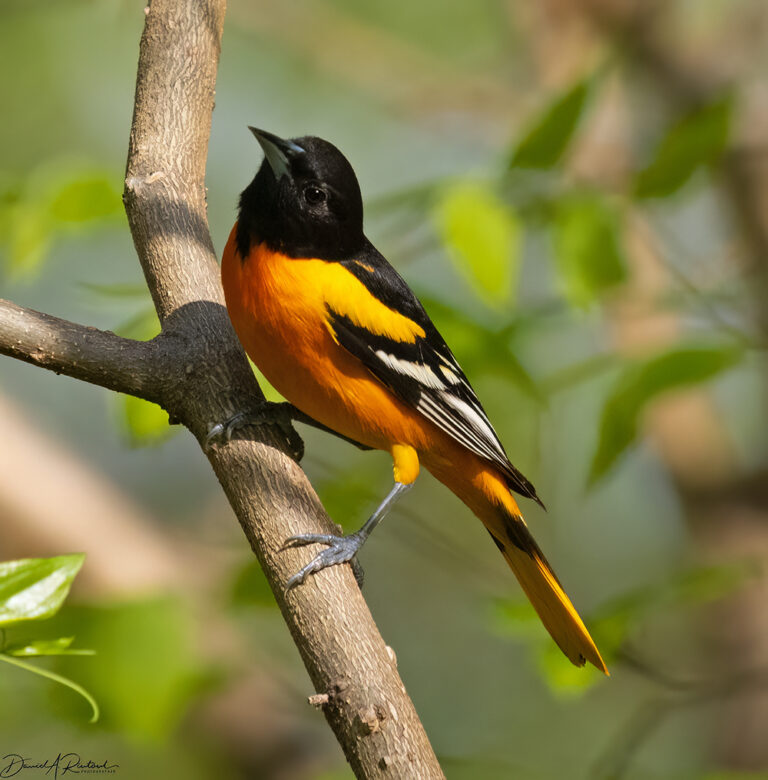
For many backyard birders, one of the most anticipated returnees each spring would be the Baltimore Oriole (Icterus galbula). These come in a dizzying variety of plumages, with different looks for the males and females, as well as different looks for birds of different ages. This is an adult male in at least his third year on the planet, sporting what the molt gurus call Definitive Alternate Plumage. No matter what you call it, he’s a stunner, and I think he knows it. Click here for larger image.
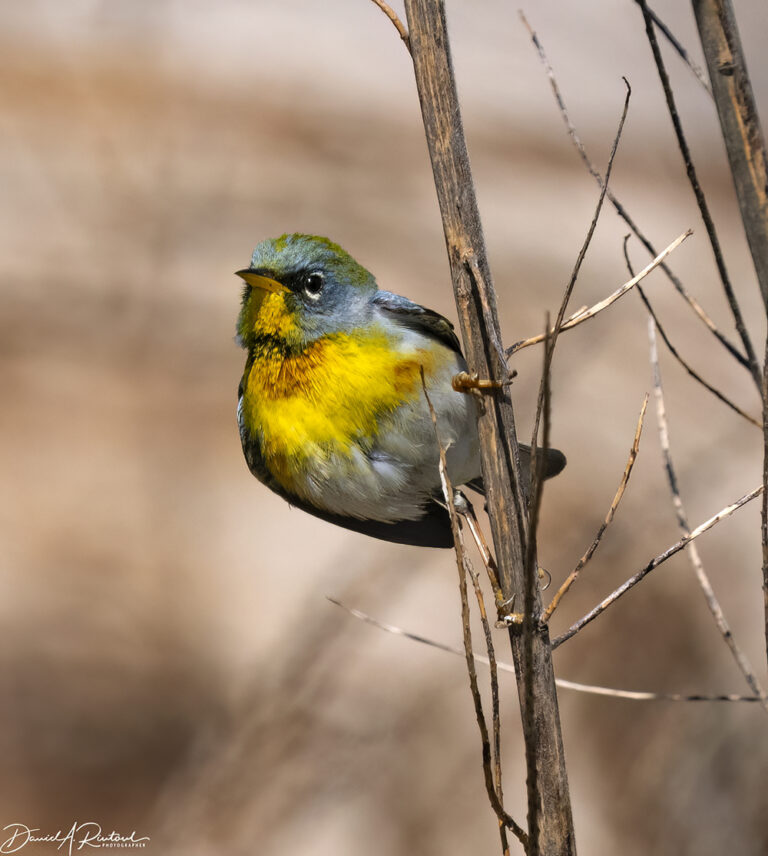
For me, however, one of the most anticipated returnee might be this one. It’s a male Northern Parula Warbler (Setophaga americana). Wee sprites who generally flit around the treetops, singing a high-pitched song that gets more difficult for my aging ears to pick up every year, they are an abundant and welcome signifier that spring is indeed here. Click here for larger image.
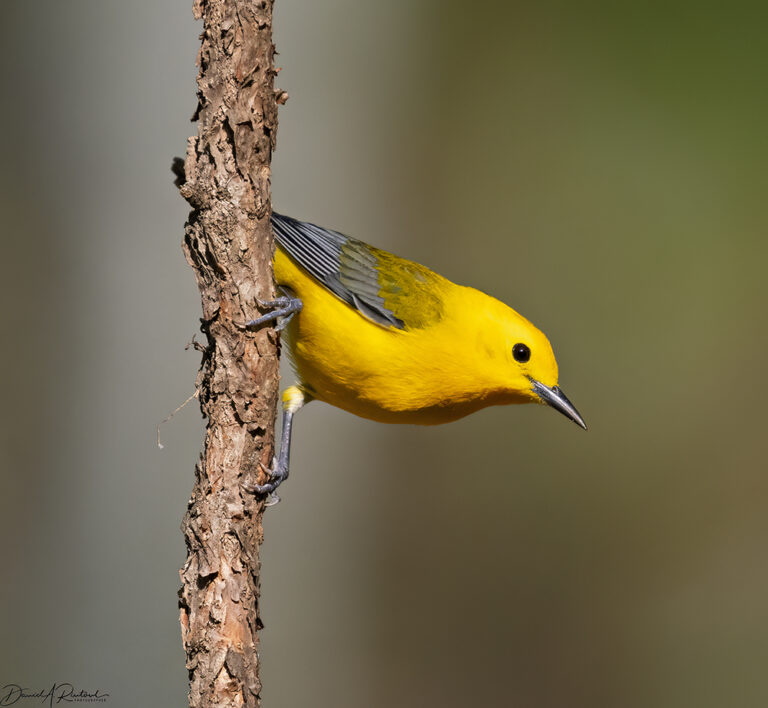
And as much as I love Northern Parulas, Prothonotary Warblers (Protonotaria citrea) might just nudge them out for top place in the list of birds I seek out every spring here. The males, like this one, are simply incandescent when they pose in full sunlight. This species is expanding its range in my part of Flyover Country, and they are a very welcome addition to the spring symphony in our woods. Click here for larger image.
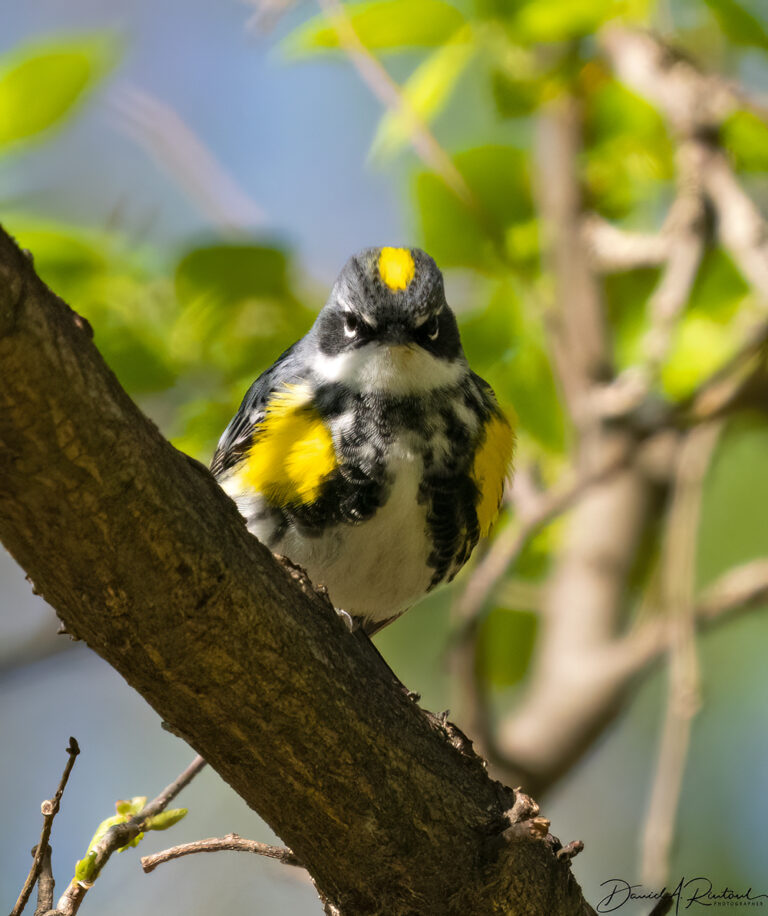
Another warbler, the Yellow-rumped (Myrtle) Warbler (Setophaga coronata) winters here, but the winter plumage is pretty drab. Once springtime commences, they molt into this very fine alternate plumage and head north. Click here for larger image.
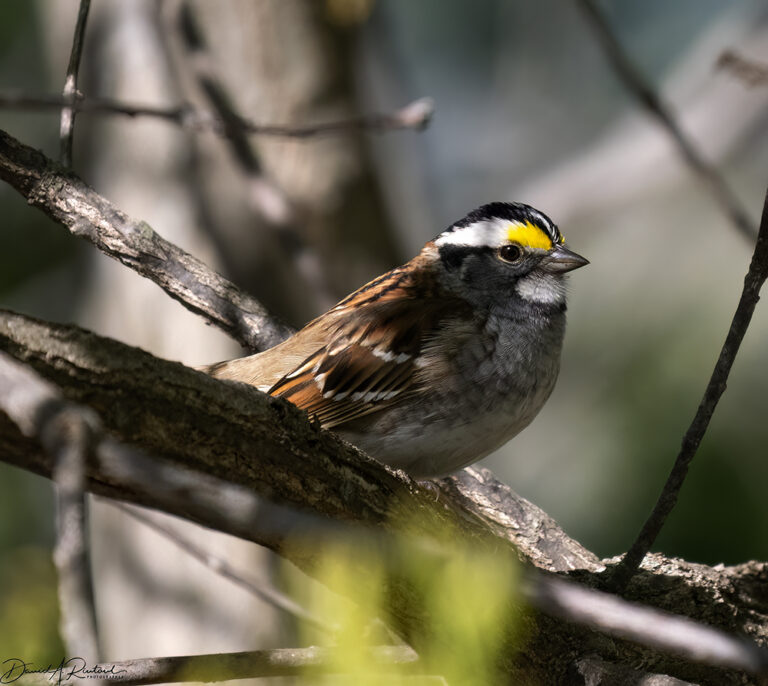
White-throated Sparrows (Zonotrichia albicollis) also winter here, but not in large numbers, at least in my part of the state. Every spring, however, the numbers are increased by migrants from the south, and they become easier to find and photograph. Click here for larger image.
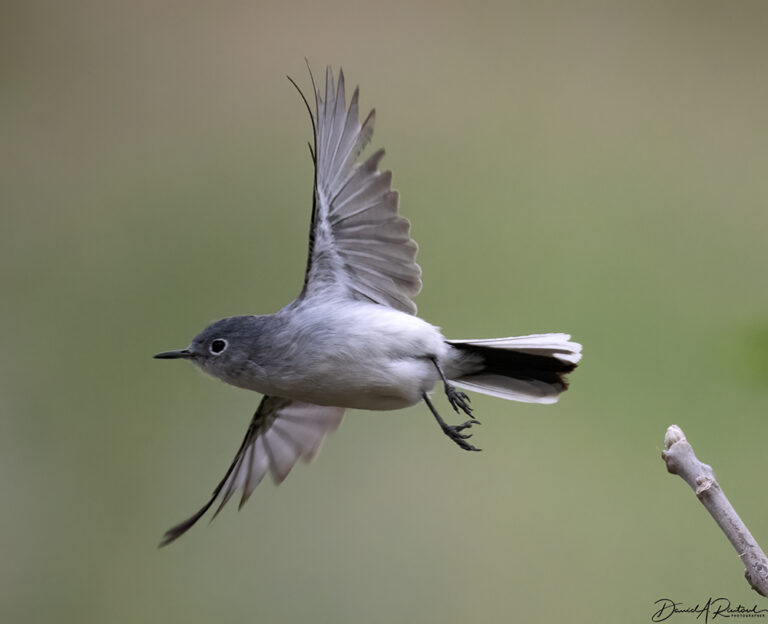
Blue-gray Gnatcatchers (Polioptila caerulea) arrived early this spring, and in larger numbers than I recall from previous springs. So there were plenty of opportunities to try to get a shot of one of these nervous speedsters in flight. I got one. Click here for larger image.
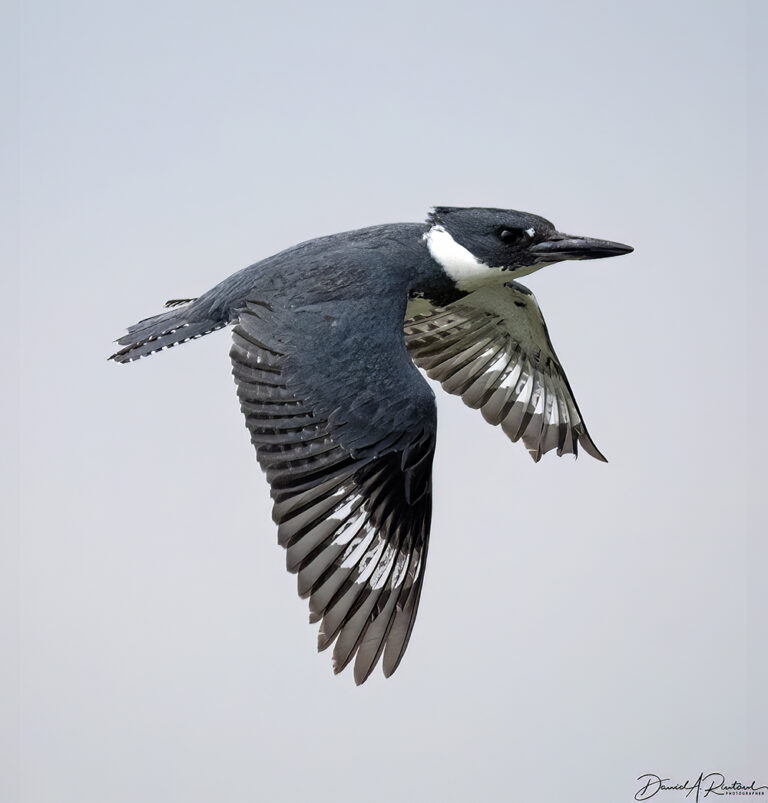
Another bird that is hard to photograph in flight, the Belted Kingfisher (Megaceryle alcyon), can be a frustrating photographic subject in general. Although this species is a year-round resident here, they are jumpy and have the advantage of being able to fly across a body of water, leaving the landlubber photographer without an opportunity to chase. This male did fly as soon as I pointed my lens at him, but at least he flew parallel to me for a bit before heading across the lake! Click here for larger image.
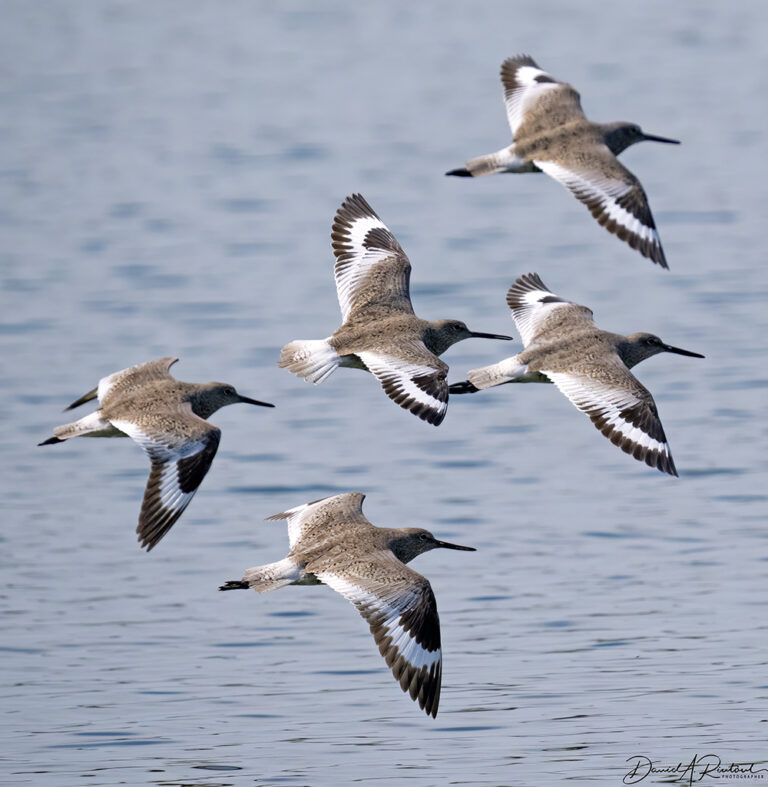
At the same site that I photographed the kingfisher, I found this flock of Willets (Tringa semipalmata). Uncommon migrants in this part of Flyover Country (mostly due to the shortage of sufficient shorebird-attracting mudflats), they sport a white wing-stripe that makes them fascinating to watch and to photograph. Click here for larger image.
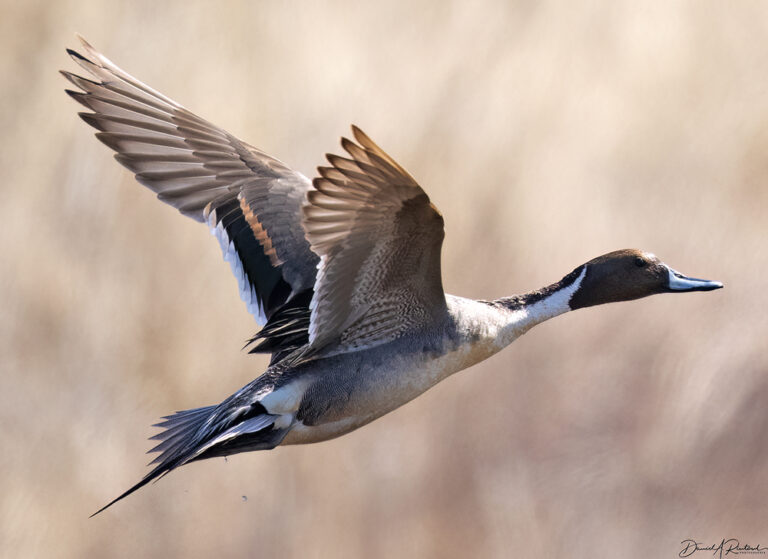
The final flight shot for this batch is a drake Northern Pintail (Anas acuta). Like most ducks, they are very wary and hard to approach, and particularly jumpy when you point a long black object in their general direction. But this is such an elegant duck that it is worth the effort to see if you can get a decent flight shot. Click here for larger image.
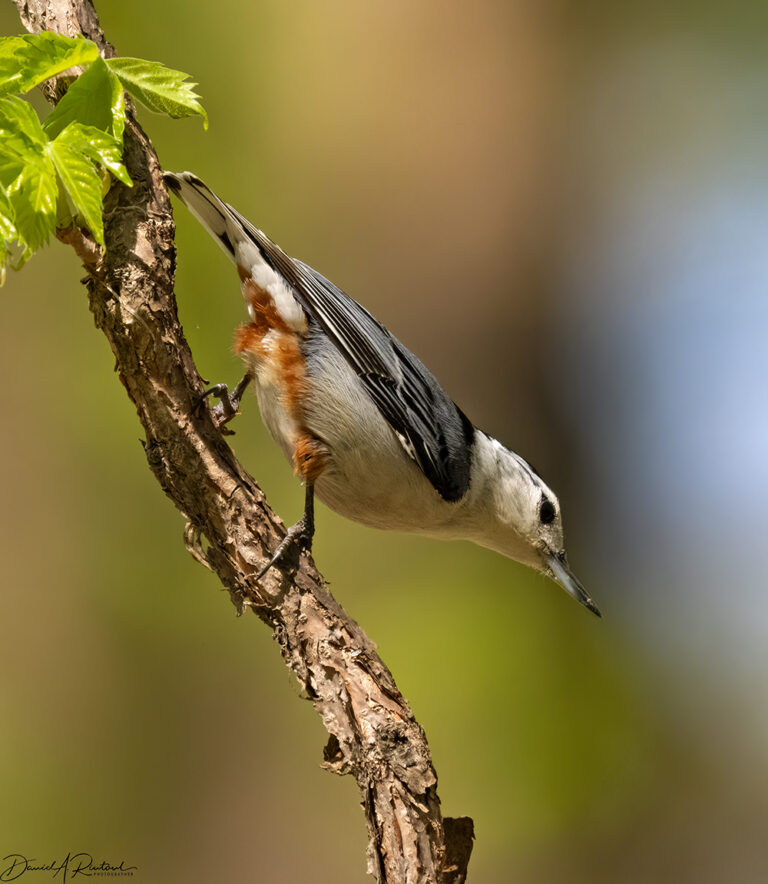
And I would be remiss if I did not include at least one permanent resident, and so here is a White-breasted Nuthatch (Sitta carolinensis), perched on the same Virginia Creeper vine as the Prothonotary Warbler above. They may be common and noisy, but they look pretty good in the springtime light as well! Click here for larger image.

sab
I filled our thistle feeder this year and as a result we are overrun with finches. Goldfinches and house finches (” sparrows dipped in raspberry juice”.) That quote is from a famous birder guy but I forget which one.
ETA My husband is entraced with the goldfinches. Seventy years old and he only just noticed them this year. Not exactly a nature guy
Morning robins are really loud.
Don
We are gifted to have such a talented (and so-very-patient) photographer in our midst. Thanks, again.
Best wishes.
Uncle Cosmo
Excellent shot of Sir Icterus Galbula to lead off (pardon the pun) the morning lineup (ditto) :^D. Perhaps his orange breast is puffed out with pride over the performance of his earthbound human teammates, who soared north from spring training to sport ;^p the second-best record in beisbol. And IIUC are getting some of their best hurlers back just at the right time. Da O’s are no longer the Woes…& TBH it’s about frackin’ time, hon!
eclare
That Yellow-rumped Warbler is watching you! You know what you did.
Kristine
Thanks for the photos. Lovely little creatures.
I have been putting out orange 🍊 halves and have seen more orioles in a few days than I can recall seeing over the previous few years. That rich, startling color.
OzarkHillbilly
The orioles gave us a pass this year, I has a big ol’ sad. :-( I too have a special place in my heart for Prothonotary Warblers, I look for them whenever I go floating. They sure aren’t hard to spot.
Betty
All lovely birds, but the in-flight shots are special.
NeenerNeener
An oriole tried to drink from my Hummzinger hummingbird feeder this year. I don’t know how successful he was. Back when I had an oriole feeder I never saw any of them use it.
Villiageidiocy
@sab: one year I had a male start throwing himself at his image in the plate glass window above my bed at first light. I mean bodily THROWING himself. bird crap all over the window. I am not a morning person.
I am no longer so enamored of the little shits.
Villiageidiocy
comment posting issues – double post.
WaterGirl
Can I just say that I love birds with attitude?
SteveinPHX
Love the Prothonotary Warbler. That, and the Yellow Warbler. Spectacular in the sunlight. Thank you.
Wormtown
thank you for the beautiful pictures and wonderful descriptions.
stinger
Perfect shot of the Nervous Speedster (Velocitatus nervosa).
Kristine
@NeenerNeener: I’ve seen orioles drink from my hummer feeder.
Those birds sure love their sugar.
pieceofpeace
Love the drake’s elegance!
Miss Bianca
You photos are always spectacular, sir, but your birb portraits capture my heart.
sab
@Villiageidiocy: One year I had one fly into my kitchen, ride a couple of times around the kitchen fan then fly away and out of the house.
J R in WV
Thanks for the beautiful pictures of these wonderful birbs~!!~
Yutsano
I have to give a shout out to the Prothonotary Warbler as yellow is my favourite colour, but that kingfisher picture is just stunning!
StringOnAStick
Lovely, as always!
I’m seeing a lot of pygmy nuthatches at the feeder near my office window, and a blue jay has figured out how to contort himself to get some seed from it too.
Late frost this morning but I had enough warning to cover everything last night thanks our fellow garden obsessive neighbor; the weather app on my phone said the low would be 37 last night and now it shows there was 2 hours of 32.
Another Scott
Beautiful Oriole.
I’ve only seen once once in the wild, on a walk with Ellie here in NoVA. It was eating something in a cherry tree. I was surprised how big, and shy, it was. It was gone in an instant.
Thanks very much for sharing your wonderful pictures and stories with us.
Cheers,
Scott.
munira
Beautiful as always. I want a Baltimore Oriole.
Mike S. (Now with a Democratic Congressperson!)
Great pic as always. But a pic of a gnatcatcher in flight? How many hours and how many blurry shots did that take?
BigJimSlade
Beautiful shots :-)
Nice, tight grouping on the willets!
Albatrossity
@Mike S. (Now with a Democratic Congressperson!):
As we used to say when counting bacterial colonies or viral plaques,TNTC*
*Too Numerous To Count